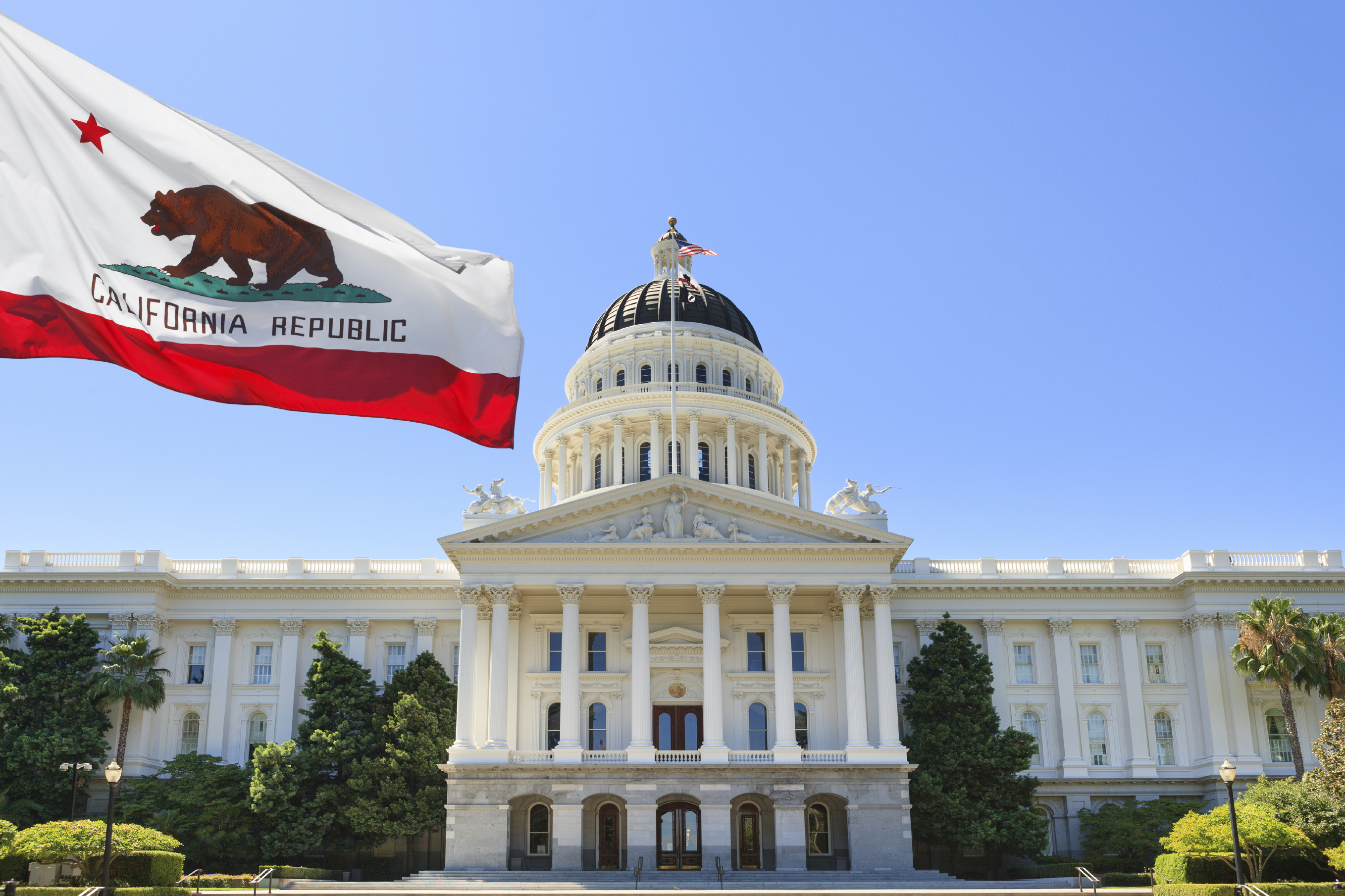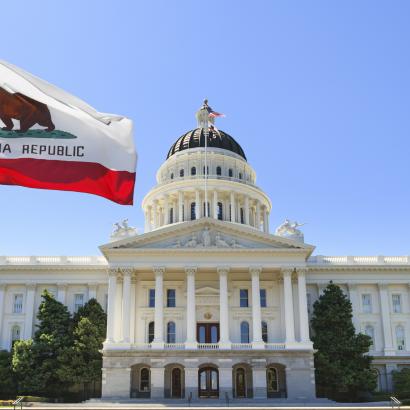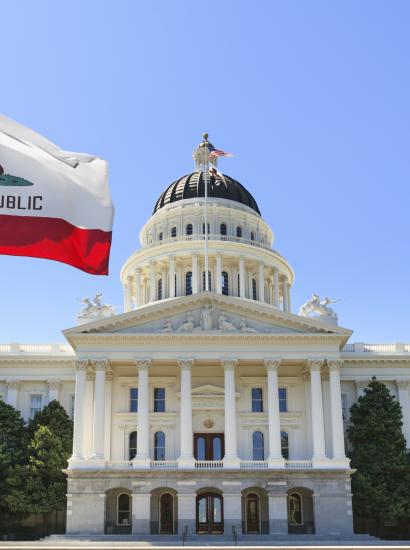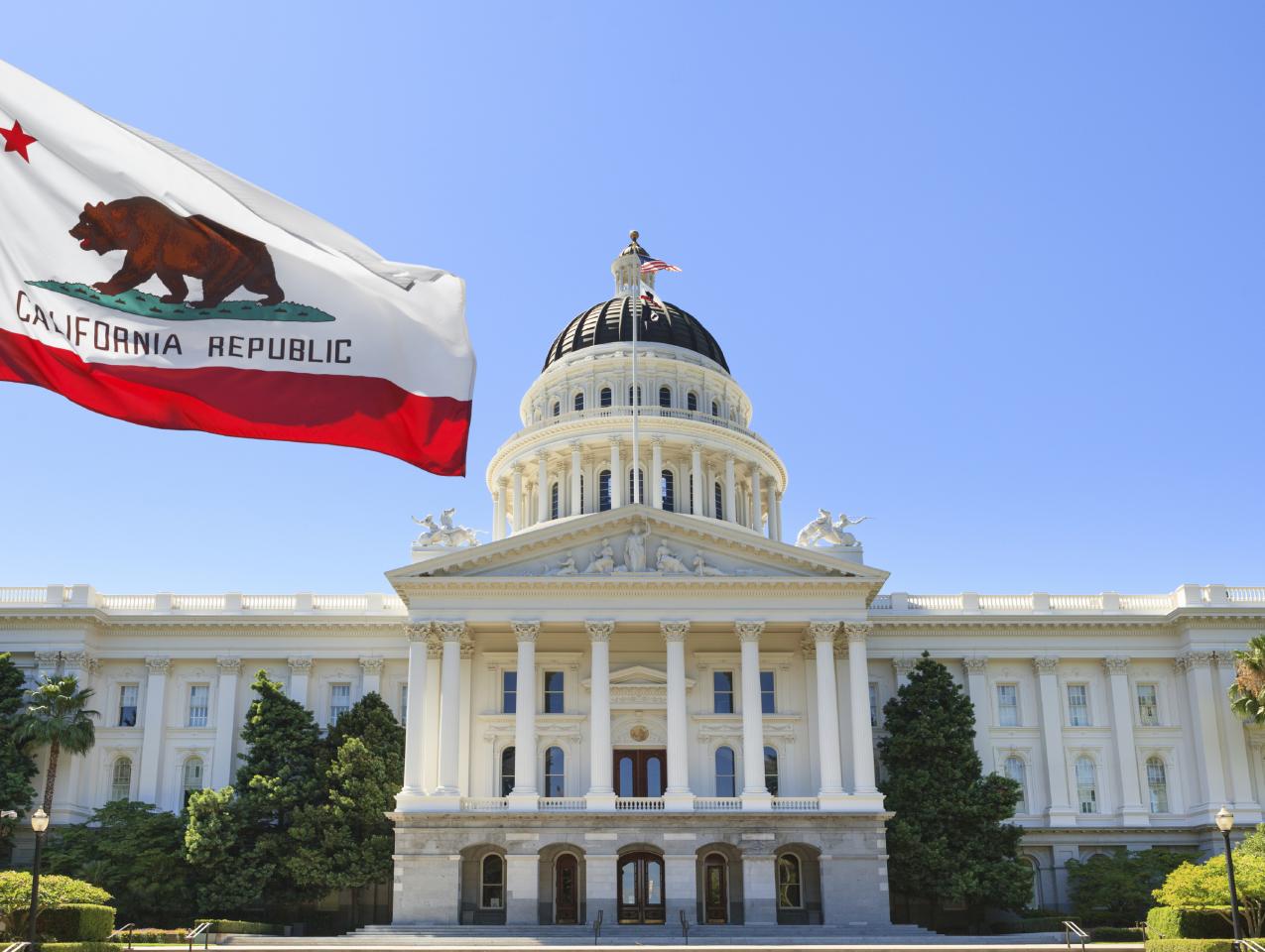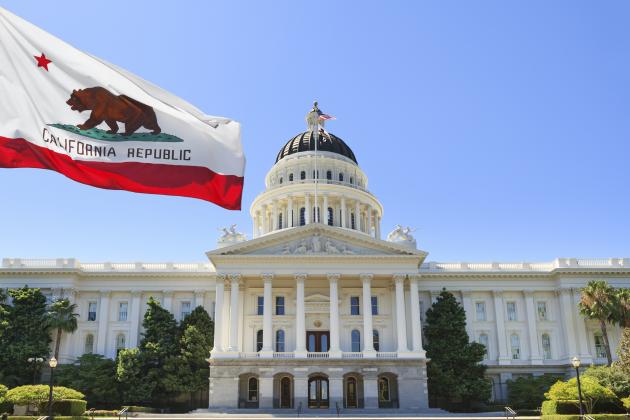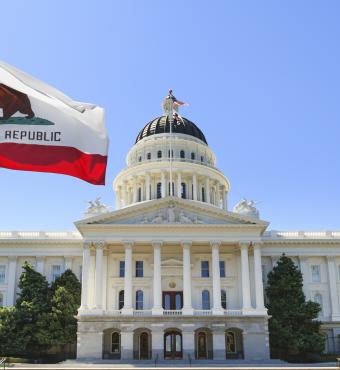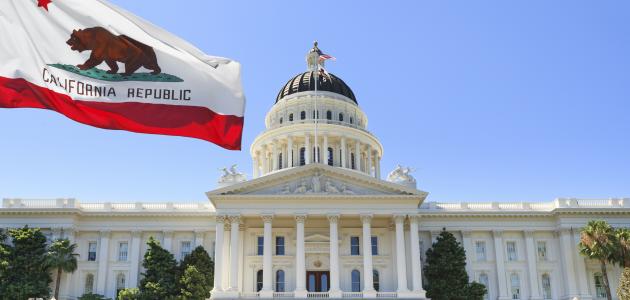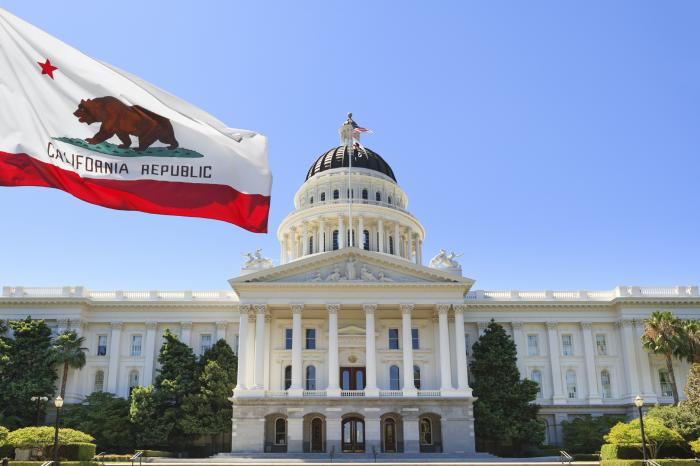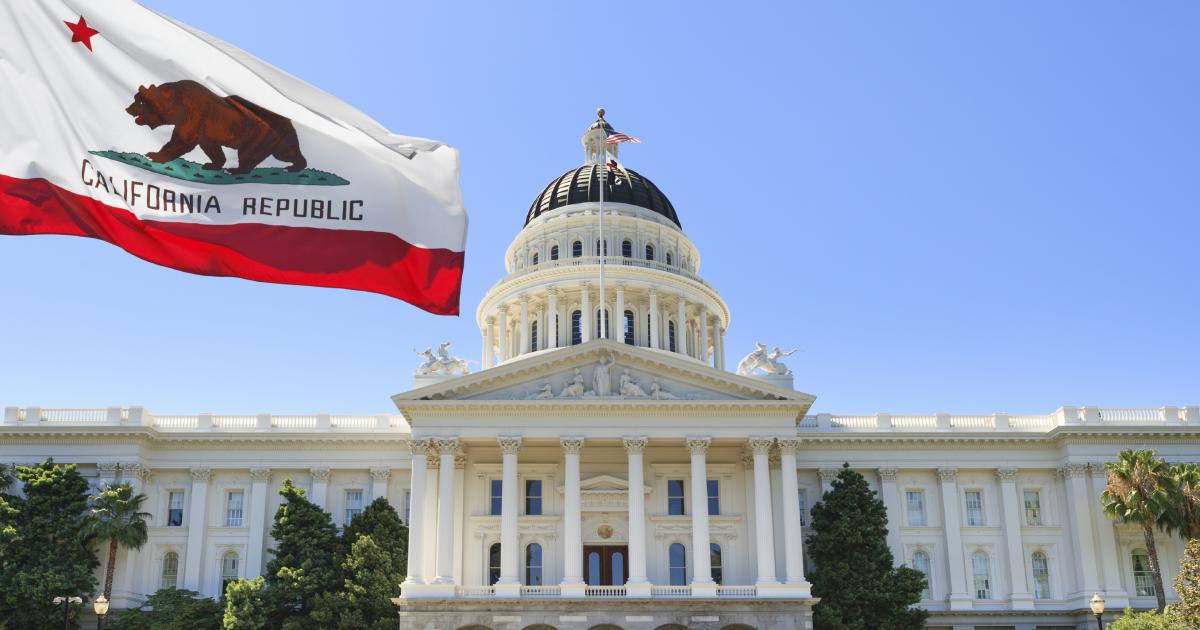- Politics, Institutions, and Public Opinion
- Campaigns & Elections
- State & Local
- California
For a guy whose plate of weighty concerns (unfunded pension liabilities, an inability to get housing legislation passed, and a slowing state job engine) evokes the image of John Belushi’s top-heavy lunch tray in Animal House, California governor Gavin Newsom is feeling pretty cocky these days.
Take this interview with Politico, in which the first-year governor describes his nascent tenure as “magnificent” and national Republicans as destined for “the waste bin of history.”
Should California Republicans decide that it’s better to get even than get mad? Good luck kicking Newsom out of office—the conventional way, that is. The last time a first-term California governor failed at re-election was all the way back in November 1942. That would be Culbert Olson, a rare Democrat amidst a long string of Republicans, not to mention a converted atheist with a penchant for pardoning militant labor leaders.
(To give you an idea of just how ancient this history is: Joe Biden came into the world 17 days after Californians gave their sitting governor the heave-ho).
That takes us to Plan B: a recall election, which is how California ended up with a “governator” in October 2003.
Telling of the partisan times that we inhabit, a recall effort’s already under way.
Well, sort of . . .
Earlier this spring, it was reported that a group that calls itself Reform California was seeking funds in order to conduct a poll weighing Newsom’s vulnerabilities.
Could California see its second recall election this century? The math suggests that staging it might be easier than you’d assume. To get a Newsom recall on the 2020 ballot, his detractors would have to collect 1.87 million signatures (actually, more like 2.6 million, given that California’s secretary of state—a Democrat serving in a nonpartisan office—likely would toss out any signature that was remotely fishy). That means the recall effort would have to bring on board roughly 55% of the 4.74 million Californians who voted against Newsom in the November 2018 gubernatorial election.
(If you’re curious about the 2003 signature-gathering numbers, recall that supporters produced more than 1.3 million valid signatures, about 400,000 more than required to trigger the recall vote)
Let’s suppose a recall question was indeed placed on the ballot. Newsom’s fortunes would have to dramatically worsen in order for such a vote to have any real suspense. In fact, the following conditions would have to stack up in order for Newsom to join Gray Davis on the short list of recalled governors.
Here’s what did in Davis back in the day:
A Lack of Popularity. Davis, the incumbent governor in October 2003, received only 44.6% support in the first of the two recall questions (Californians were first asked to vote yes or no on the recall; if they voted yes, the second question was a choice of successors).
That 44.6% wasn’t all that far from the 47.2% that Davis received 11 months earlier in his successful re-election run. That campaign was deceiving (a prominent Democratic strategist likened Davis’s five-point win to “a near-death experience.” Davis avoided Culbert Olson’s curse, but he also was the first re-elected California governor in 40 years to fail to crack 52% in terms of votes (Pat Brown received 51.9%, running against Richard Nixon in 1962).
The current governor’s popularity? Newsom received nearly 62% support in November 2018. A warning sign, however: his negatives have climbed to 37%, up 8% since taking office in January.
Events Ganging Up. By the time Californians held their special election in October 2003, events seemingly had conspired against Davis, one being an economic recession dating back to March 2001 (a budget surplus that had greeted Davis when he first took office had by the time of his re-election instead turned into a $35 billion deficit).
Two actions by state government fueled Davis’s downhill slide, the first being rolling blackouts that began in the summer of Davis’s second year in office and at times affected up to 1.5 million Californians (the demand for electricity exceeding the grid’s supply).
The other annoyance: an increase in the state’s vehicle license fee (aka, the “car tax”) that took voters by surprise.
Technically, Davis didn’t raise taxes; he approved restoring a fee that had been lowered in flusher times, thanks to a clause in the law that allowed him to do so in times of fiscal crisis. As most Californians don’t pay close attention to what transpires under the State Capitol dome, they weren’t aware that an adjustment was in the works (the average vehicle license fee jumped from $70 to $210). And it didn’t help Davis that many learned of this increase for the first time when letters from the state DMV arrived in their mailboxes shortly before the recall vote transpired.
Newsom doesn’t face the same dilemma as Davis (messing with voters’ cars vs. fearing the voters’ backlash).
But rolling blackouts?
PG&E Corp., California’s biggest utility, has announced plans to cut power on high-wind days in 2019, possibly for days at a time, during wildfire seasons. Which means some voters may wonder what the state’s been doing the past decade-and-a-half in regard to providing a reliable electric grid?
He Won’t Be Back. A successful recall effort is like a three-legged stool—it requires an unpopular governor, unpopular policies, and, finally, a popular alternative.
In present-day California, it’s that last leg that’s missing: a credible replacement for Newsom.
In 2003, that role was played ably by Schwarzenegger. He mugged for the cameras (at one campaign event dropping a 3,600-pound weight on top of an Oldsmobile Cutlass while telling his supporters, “Hasta la vista, car tax”).
And he was pragmatic.
Schwarzenegger offered a middle-ground agenda that promised to repeal the car tax, address workers’ comp reform, and increase government transparency (his passion for fighting climate change wouldn’t materialize until later in his first term).
Arnold also reawakened a sleepy electorate: 9.4 million Californians voted on the recall question, an 11% increase in turnout from the previous year’s regularly scheduled gubernatorial contest.
In the California of 2019, there is no star of Schwarzenegger’s dimension waiting in the political wings. To the extent a Republican “celebrity” candidate is mentioned, the choices don’t involve movie action heroes—more like radio hosts, reality personalities, and television actors past their prime.
That lack of star power isn’t enough to topple a sitting governor, even in a state starved for electricity.
Still, would it kill Newsom to show a little humility?







